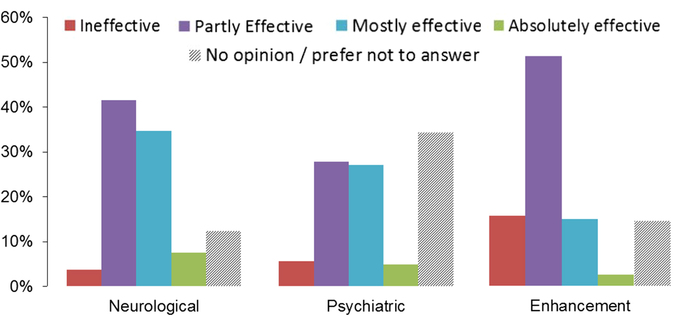From a study published earlier this year that collected responses from 265 career scientists whose work involves tDCS.
Researchers’ perspectives on scientific and ethical issues with transcranial direct current stimulation: An international survey
Researchers’ assessment of the efficacy of tDCS in clinical and enhancement contexts. Data represents distribution of responses (%) for each category, see legend.
The cautious approach to use of tDCS is also reflected in the low ratings for efficacy of its use to enhance normal functions. The tDCS research community appears well aware of current limitations and the need for future research to address those. The appearance of enthusiastic articles in the media and online suggest that these cautious views are frequently not being communicated clearly to the public. Researchers must make their views about the limited evidence of safety and efficacy clearly when speaking with the media or communicating with the public.

